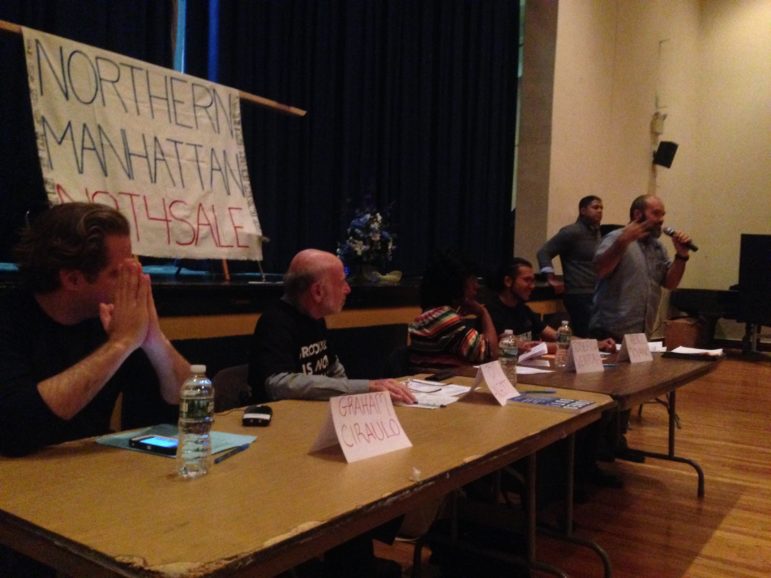
Abigail Savitch-Lew
On Sunday, the Northern Manhattan Is Not For Sale coalition, which includes local residents and community groups like Centro Altagracio de Fe y Justicia as well as citywide organizations like the Metropolitan Council on Housing and Faith In New York, held a public forum to discuss the city's current rezoning plan for Inwood.
A group of Inwood stakeholders has been pushing the city to slow down the planning process for the potential rezoning of Inwood—and the city does seem to be prolonging the community engagement period longer than originally expected.
The Economic Development Corporation (EDC) told City Limits last spring that it expected to release a draft scope of work, a document describing the details of the rezoning proposal, by the end of the summer, but EDC has pushed the release forward to an unknown date.
EDC, at the invitation of Councilman Ydanis Rodriguez, began studying the neighborhood for a potential rezoning and meeting with community groups in the summer of 2015. EDC has proposed spurring housing and commercial development in the neighborhood by upzoning the areas east of 10th Avenue lying roughly between Academy Street and the railyards as well as north of West 218 Street, which are currently zoned for industrial uses.
EDC officials say they’ve long heard that members of the community desire to make parts of Broadway that are currently zoned for automotive uses more contiguous with the rest of the street, and to make 10th Avenue, underneath the elevated railway, a more pedestrian-friendly, active corridor. They have proposed rezoning parts of these streets to promote a mix of housing, commercial and community facility uses.
The city’s proposal also includes improvements to local infrastructure, resources for small businesses and strategies to mitigate displacement, such as heightening supervision of the neighborhood’s rent-stabilized buildings, among other benefits. According to a July presentation, at least 20 to 30 percent of the housing created in the upzoned areas would be affordable under the city’s mandatory inclusionary housing policy, with the use of city subsidy programs to create 100 percent rent-restricted housing on additional sites.
On September 29, twenty-nine signatories, including several members of the Northern Manhattan Is Not For Sale coalition, Conservancy North, Eagle and Condor Community Center and others, sent a letter to Mayor de Blasio requesting further extension of the timeline for the rezoning study to ensure more engagement with groups they felt were underrepresented on the stakeholder working group formed by Councilman Rodriguez, particularly “mono-lingual Spanish speakers, tenant associations, faith communities, community organizations, business owners and people who work in the proposed rezoning area.” (The working group does include several dozen community and faith-based organizations and business improvement groups, but some felt that working-class, Spanish-speaking residents were underrepresented.)
They also called on the city to provide a contextual rezoning for areas adjacent to the rezoning area to protect the neighborhood’s rent-stabilized housing from demolitions and out-of-context development. A whopping 61 percent of housing units in Inwood and Washington Heights are rent-stabilized, and some stakeholders want additional protections to ensure increased real estate activity in the neighborhood does not exacerbate harassment and deregulation of this housing stock.
In addition, they demanded investments in substructure infrastructure, a stronger strategy to preserve existing affordable housing, and a significant number of housing units for families making below 30 percent AMI, or $24,480 for a family of three. (The city’s subsidy program targetting extremely low-income families dedicates 10 to 15 percent of housing to families in this income bracket.)
The letter also voiced concerns about the upzoning of Tenth Avenue and Broadway, and requested the city instead consider a more modest, less denze rezoning for this stretch.
In his response to the letter last Friday, Charlie Samboy of EDC acknowledged the importance of continued community engagement.
“While we have been able to talk and meet with hundreds of residents throughout interactive activities, and via the Stakeholder Working Group had a robust dialogue that included local residents, nonprofit organizations, institutions, businesses, and elected officials, we recognize the need to create additional opportunities for the larger Inwood community to be fully engaged in the planning process. We look forward to reaching the residents that reflect the demographics of the community as this process develops,” Samboy wrote.
He added that the coalition’s proposals regarding the potential rezoning “deserve careful consideration,” that EDC appreciates the nuanced input from stakeholders, and that EDC would continue to work with stakeholders to improve the plan.
Graham Ciraulo, a founder of the Northern Manhattan Is Not for Sale coalition, says that Samboy’s response leaves him hopeful for increased inclusion of the area’s Spanish-speaking community.
“But it remains to be seen if that is actually the case,” he says. “We are all waiting for the release of an updated timeline that is responsive to what we believe are very reasonable requests.” He adds that EDC should provide more details about its plan for 100 percent rent-restricted housing.
Other working group voices speak
Some other members of the working group formed by Rodriguez offered strong praise for EDC’s engagement efforts.
“The city planners were very professional. They listened well. They attempted to answer all the questions. But some of them are unanswerable,” says Carol Weeks, director of Dyckman Senior Center, who says she understands addressing gentrification is a complex matter. She praised the format of one meeting, in which participants broke into smaller groups to discuss the rezoning in detail. “For me it was a very edifying experience.”
“The people who I’ve seen who are running the meetings—there seems to be genuine concern,” says Charles Corliss of Inwood Community Services, adding that he believes the city is “acting in good faith” and will seek to incorporate the neighborhood’s feedback, especially about the depth of affordability required for new housing.
Tomas Trinidad, also at Inwood Community Services, says that Inwood residents are already getting displaced, with or without a rezoning, and that he believes the plan will create jobs, housing, and other resources desperately needed by Inwood’s poorest residents. He says that many of the people opposing development seem to be co-op owners on the west side of Broadway that do not represent the interests of the low-income residents on the east side of Broadway, and he praised EDC’s outreach efforts.
“This is the first time that I feel that the community is part of the process, that the community has a voice,” he says, adding, “You’re never going to engage 100 percent of the local residents.”
Maria Lizardo, director of the Northern Manhattan Improvement Corporation, says she believes the city has good intentions and has made an effort to include community members, but that the city needs to ramp up its engagement with residents on the lower-income, east side of Broadway. She says that while she sees the need for the construction of below-market rate housing, she wants to ensure the city dedicates sufficient resources to making that housing is deeply affordable, to the preservation of existing affordable housing and local culture, and to infrastructure improvements.
“It can be an opportunity for the neighborhood, but definitely we are going to need to find ways to hold the city accountable and make sure they allocate the resources necessary,” she says.
Concerned stakeholders host their own discussion
On Sunday, the Northern Manhattan Is Not For Sale coalition, which includes local residents and community groups like Centro Altagracio de Fe y Justicia as well as citywide organizations like the Metropolitan Council on Housing and Faith In New York, held a public forum to discuss the city’s current rezoning plan for Inwood. The forum, conducted in Spanish with English translation on headphones, drew over 140 people to Good Shepherd Church on Isham Street.
Organizers first heralded their victory persuading Rodriguez to vote against Sherman Plaza, a mixed-income development project planned for Inwood that would have included 50 percent rent-restricted units, but that the coalition said was not deeply affordable enough and would have been out-of-character with the neighborhood. The project, which the City Council Land Use Committee rejected in August after Rodriguez changed his mind on the project, would have been the first private application under the mayor’s mandatory inclusionary housing policy.
“You know what we did? We united…We said with one voice, no…We got media coverage and less than a week after that, we won,” said Joe Vaquez, a member of the coalition. “The fight is not over. This isn’t over. They’ve come up with a new plan for rezoning in Inwood and that’s why we’re here today.”
Tom Angotti, a professor at Hunter College and a guest speaker at the forum, argued that the city’s promises of affordable housing and job growth were simply ruses for a plan that would benefit developers at the expense of native residents. He related the mayor’s rezoning proposals to the nation’s long history of displacing the poor and people of color.
“Displacement is a deep thing in this community, in this society, because this was a nation that was made, that was built based on tearing people away from their places, from Africa, from all over the world…from stealing indigenous lands…and we keep doing the same things without thinking about it,” Angotti said. “They always attack the weakest communities. Poor people, immigrants of color. Why? Because they are living on land that could be potentially a lot more expensive, a lot more lucrative, and they can be displaced a lot more easily than people who are better off.”
Angotti told the audience that trying to make adjustments to the plan through the community board would be of little use, and instead encouraged stakeholders to engage in protest.
Organizers also said that they could not support a rezoning if the state did not strengthen laws regulating rent-stabilized housing, and invited audience members to join them in lobbying Inwood’s new state senator Marisol Alcantara and new state assembly member Carmen De La Rosa to fight for stronger protections.
During the small group breakout at the end of the meeting, attendees also discussed collaborating with other rezoning neighborhoods to protest the mayor’s housing plans, with an organizer from Chinatown inviting Inwood residents to join him at a protest at City Hall scheduled for Wednesday.
In an e-mail sent to City Limits, EDC spokeswoman Stephanie Báez spoke to forum participants’ concerns about gentrification.
“The fear of displacement is real, which is why the City is striving to preserve and create affordable housing and develop workforce opportunities so that Inwood residents can stay in the neighborhood they have helped shape,” said Báez. “It’s important to note that for many years, this community asked the City to engage in comprehensive planning for Inwood. This administration has answered that call and has gathered valuable community input through our outreach efforts in recent months, including conversations with the stakeholder working group, a July open house, and meetings with community groups and elected officials. We will continue to carefully review and reflect on that feedback to move Inwood NYC forward in a way that is thoughtful and responsive.”
Councilman Rodriguez similarly emphasized a commitment to hearing from local stakeholders.
“We will continue to listen to all voices in our community. We know there is a severe need for affordable housing uptown and I will continue to search for opportunities, working with my community and all levels of government, to build new housing affordable to our residents,” he said in an e-mail.
City Limits’ coverage of housing and development is supported by the New York Community Trust and the Charles H. Revson Foundation.


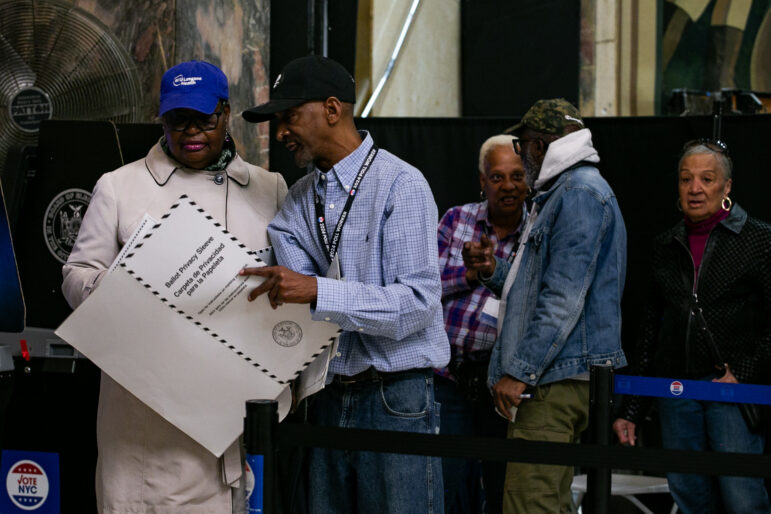
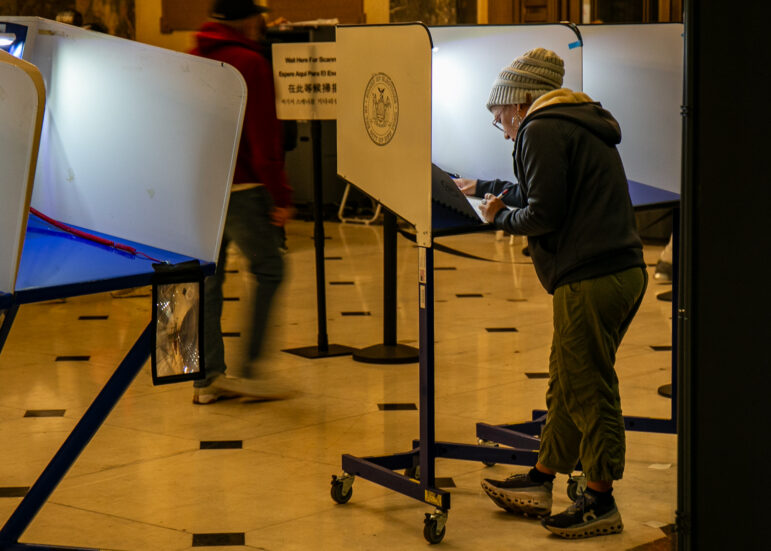
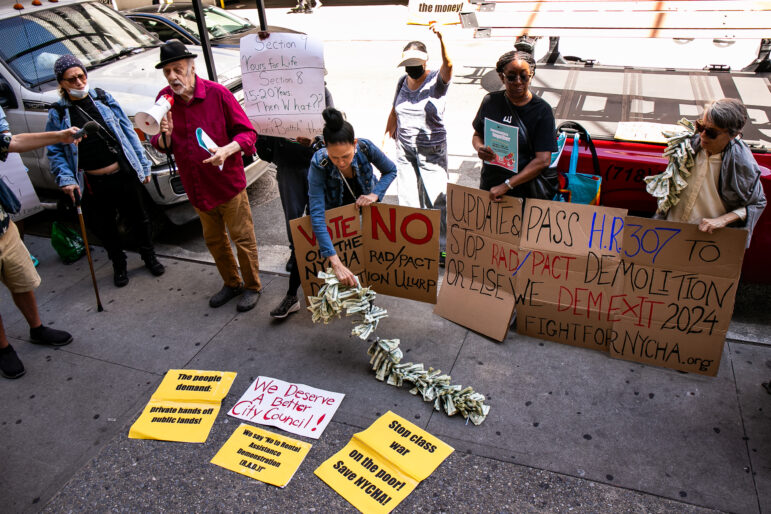
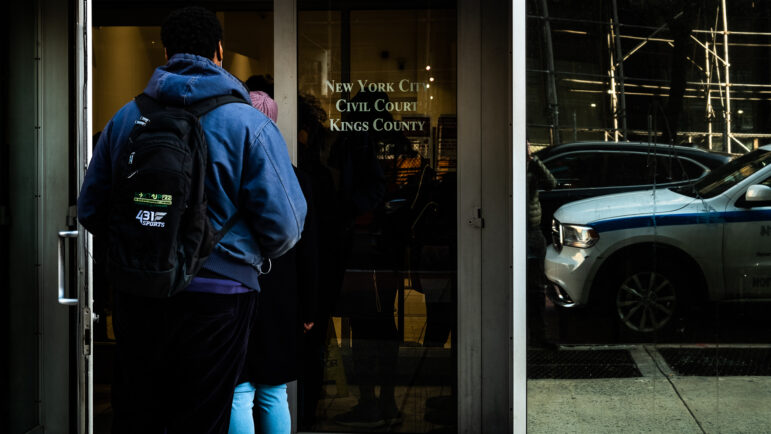
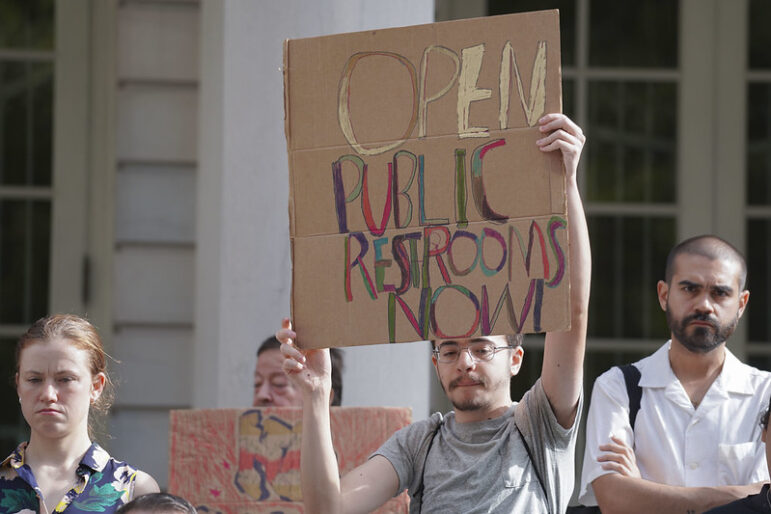


3 thoughts on “City Takes Time With Inwood Rezoning Process”
Listen to the residents. deBlasio shouldn’t be able to force rezonings on any neighborhood.
Thanks for reporting on this, but there are many errors and misconceptions and missing information in the above. Some clarifications:
– No one knows what EDC is up to. Their previously announced calendar, which they talked about at every meeting, has been abandoned. No future events are scheduled on their website.
– The “stakeholders group” consisted of mostly pick by Rodriguez, with a few actual residents sprinkled in. At many of the meetings each focus group breakout might have only 1 or 2 Inwood residents.
– No significant input was ever gathered at any of the stakeholder meetings, and no changes to the plan were ever made based on input. The consultants running the stakeholder meetings ultimately had to abandon any idea of a summary report (after many months of meetings) because in reality there was nothing to report on. The city came with their plan already formed and used the pretense of open houses and stakeholder meetings to pretend to gather input when what they were hoping for was to disseminate their view and build support. Obviously that did not happen as once people found out about the plans there were several concerns.
– It is true that residents have long been asking for the blighted former industrial parts of Inwood to be rezoned and be more contiguous with the rest of what is one of Manhattan’s best neighborhoods. However, at no time did any resident say “hey, would you please double or triple the density and build tall buildings completely out of context with what has worked so well in Inwood for a century?”
– EDC’s discussions about revitalization, pedestrian-friendliness, parks, etc. have all essentially amounted to a conversation along the lines of “Do you like ice cream? Which flavor is best – strawberry or chocolate? Oh, and sprinkles are great too, right? And waffle cones?” They leave out entirely the fact that the ice cream is $12 a cone and by the way won’t be served until 2025. It was only in the summer that the cost of the rezoning — massive increases in density — were revealed. People were upset about this, but no changes to the plan were made.
– The only change to the plan that was made was a sudden surprise to leave the northernmost part of Inwood zoned industrial, in order to keep it blighted and empty for future expansion by NYP. All of that talk about needing housing and all those other good things vanished when someone made a phone call, evidently.
– Let’s be clear, MIH is triggered by upzoning, and MIH only requires 20-30 percent affordable, and that affordable might run as high as 80% AMI and will be no lower than 40%AMI. (There is no 30% AMI option. It does not exist in the zoning law). You cannot force the low-income 40% AMI option. Talk of city subsidies is just that, talk. For-profit developers simply don’t build 100% affordable housing on land they own.
– The “contextual zoning” is a tricky label. The city will say they ARE using contextual zoning, but an R9A or R8A zoning is contextual to HIGH DENSITY zoning districts and can never, by definition, be contextual to Inwood’s R7 existing zoning and density. The city does not want to hear the words “R7A” because it won’t be as attractive to developers as a giant tower, but that is what residents are asking for, at least along areas that border the existing residential neighborhoods.
– This article quotes an Inwood community service member who thinks the co-op owners are opposing development. This is a mistruth that perpetuates an old stereotype. In reality, the coop owners have been proactive in participating in the meetings and have welcomed development that would remove the blight surrounding their buildings. What they are opposed to is the density and scale currently on the proposed maps, which is something very different from opposing development entirely.
– I know the narrative is just oh-so-convenient to call the failed Sherman Plaza proposal a 50-percent affordable project, but please stick to the facts. The rezoning would have required either 30% of units at 80%AMI or 20% of units at 40%AMI. Any talk about “50% affordable” hinged on non-binding talks with the city to maybe throw in some financing or such to entice more affordability, but as a rezoning matter it never existing. Zoning laws simply do not have a 50% affordable requirement, period. The media needs to stop mis-reporting this spin by the Mayor’s office over a super-aggressive spot rezoning that never should have seen the light of day in the first place.
I agree that no one knows what EDC is up to. They ask for community input, but there is actually no transparent process for including that input into the existing plans. As far as I can tell it goes into a black hole. When asked “when and how will the community’s suggestions be incorporated into the existing plan?” the EDC reps could not answer. They gather feedback and listen nicely, but to what end? So we community members feel good –like we had a voice? I have no evidence that anything they “listen” to actually makes it into the plan, which already exists. Lets get some transparency on that–does community input amke any difference at all?